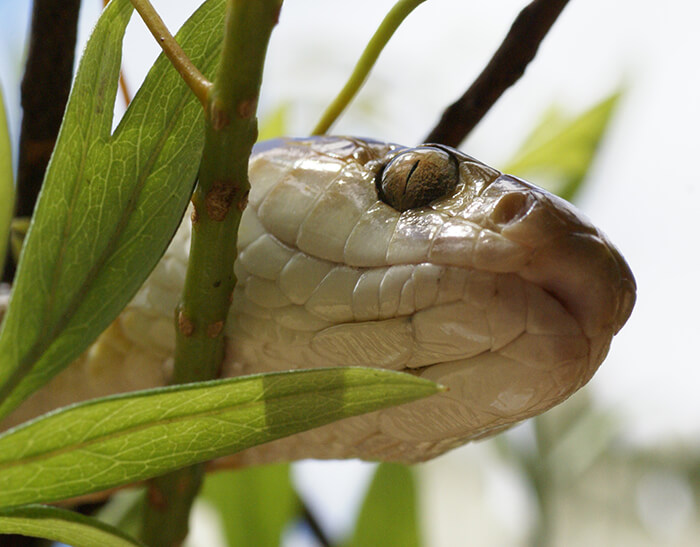Introduction
Snake attacks are a serious medical emergency that can take place in numerous settings, especially in areas where serpents are prevalent. In Australia alone, there are numerous types of venomous snakes such as the Tiger Snake, Eastern Brown Snake, and King Brown Snake. Comprehending how to efficiently manage serpent attacks is important for anyone that hangs out outdoors or lives in backwoods. This short article will check out detailed emergency treatment administration approaches for snake bites and detail best methods for responding to these incidents.
First Aid Administration of Serpent Bites: Finest Practices for Every Situation
When managing a serpent bite, the initial response can considerably influence the target's outcome. Immediate action is essential because swift medical intervention frequently determines the degree of injury or survival price. Below are crucial first aid principles to keep in mind:
Stay Calm: The initial step in managing a serpent bite is to stay calm. Panic can raise heart prices and raise the spread of poison throughout the body. Call for Help: Dial emergency situation solutions immediately. Offer them with your place and any kind of information concerning the serpent if possible. Keep the Sufferer Still: Motivate the target to remain as still as feasible. Movement can increase blood circulation, speeding up poison absorption right into the bloodstream. Positioning: If viable, place the damaged limb at or below heart level. This positioning helps decrease venom spread. Remove Tight Clothing: Loosen up any garments or precious jewelry around the bite website; swelling may take place quickly after a serpent bite. Do Not Apply Ice/Cold Packs: Unlike common belief, using ice can intensify tissue damage and ought to be avoided.Understanding Serpent Variety and Their Habitats
Tiger Snakes and Their Habitat
Tiger serpents (Notechis scutatus) are amongst Australia's most infamous venomous snakes as a result of their aggressive nature and powerful venom.
- Habitat: They typically populate seaside areas, marshes, and locations with dense greenery like marshes and swamps. Risks: Recognition of regional tiger snake environments can reduce the risk of encountering one unexpectedly.
Eastern Brown Snakes: A Considerable Threat
The Eastern Brown Serpent (Pseudonaja textilis) is an additional extremely poisonous types discovered throughout eastern Australia.
- Habitat: This serpent grows in metropolitan locations, farming lands, and grasslands. Behavior: Recognized for its fast strikes when endangered, comprehending its habits might aid minimize encounters.
Recognizing Symptoms of Snake Bites
Identifying signs beforehand can improve opportunities Brown Snake of effective treatment:
Local Symptoms:- Pain and swelling around the bite site Discoloration or bruising
- Nausea or vomiting Difficulty breathing Signs of shock (e.g., light skin, quick heart beat)
First Aid Procedures for Specific Snake Bites
First Aid for Tiger Serpent Bite
In case of a tiger snake bite:
Stay calm; maintain still. Call emergency situation services immediately. Immobilize the affected arm or leg utilizing a splint if available. Do not try to suck out poison or apply ice.First Aid for Eastern Brown Snake Bite
For an eastern brown serpent Bite Location bite:
Keep tranquility; assure the victim. Call emergency services without delay. Position them easily while preventing movement. Mark the edges of swelling with a pen if possible for observation.Creating Your Serpent Bite Emergency Treatment Kit
A well-prepared first aid eastern brown snake venom kit can make all the distinction throughout emergency situations:
|Thing|Function|| -------------------------------|---------------------------------------------------|| Compression bandages|To immobilize limbs|| Clean and sterile gauze|To cover injuries|| Antihistamines|For allergic reactions|| Emergency contact numbers|Quick access during situations|| User's manual|Detailed assistance on managing emergency situations|
What Ought to You Never Do When Treating a Serpent Bite?
Here's a list of typical pitfalls when dealing with serpent bites:
Do not use tourniquets; they can trigger even more injury than good. Avoid reducing into or trying to suck out venom from the wound. Never offer alcohol or energizers to victims as it can exacerbate their condition.FAQs About Emergency treatment Monitoring of Serpent Bites
1. What ought to I do if I see a snake?
Stay calm and retreat gradually without abrupt movements.
2. Just how do I determine if a serpent is venomous?
Research local types' characteristics; many have unique color scheme or markings.

3. Can I make use of ice on a serpent bite?
No, applying ice can boost cells damage.

4. The length of time do I have after being bitten before seeking medical attention?
Seek clinical focus right away-- time is critical with venomous bites!
5. Is it safe to drive myself to the healthcare facility after a bite?
No! It's unsafe as symptoms may get worse en route; await specialist help.

6. Are all snakes in Australia dangerous?
No! While Australia has lots of dangerous serpents, there are additionally non-venomous types that pose no threat.
Conclusion
The first aid monitoring of serpent attacks needs timely action incorporated with understanding about regional varieties' behavior and habitats like those of tiger serpents and eastern brown snakes in Australia. By adhering to finest techniques detailed above-- such as remaining calmness, calling emergency solutions quickly, and recognizing what not to do-- you significantly enhance survival opportunities after such crashes occur.
Equipping yourself with understanding about different sorts of serpents in your location and preparing a suitable emergency treatment set will certainly guarantee you prepare should an experience emerge-- making you better prepared to handle this possibly dangerous circumstance effectively!